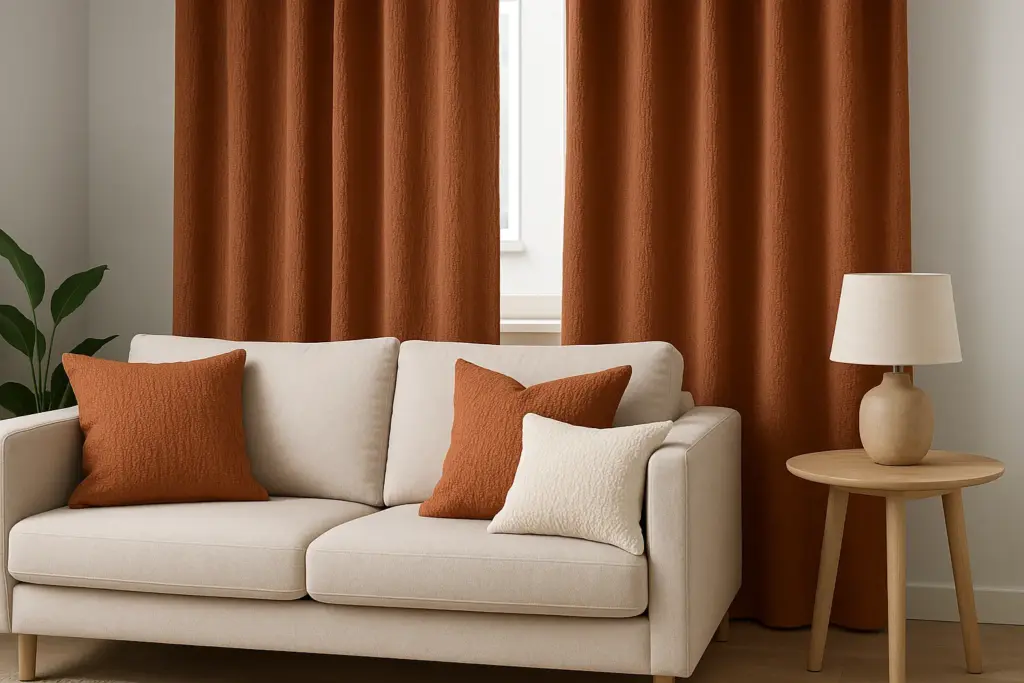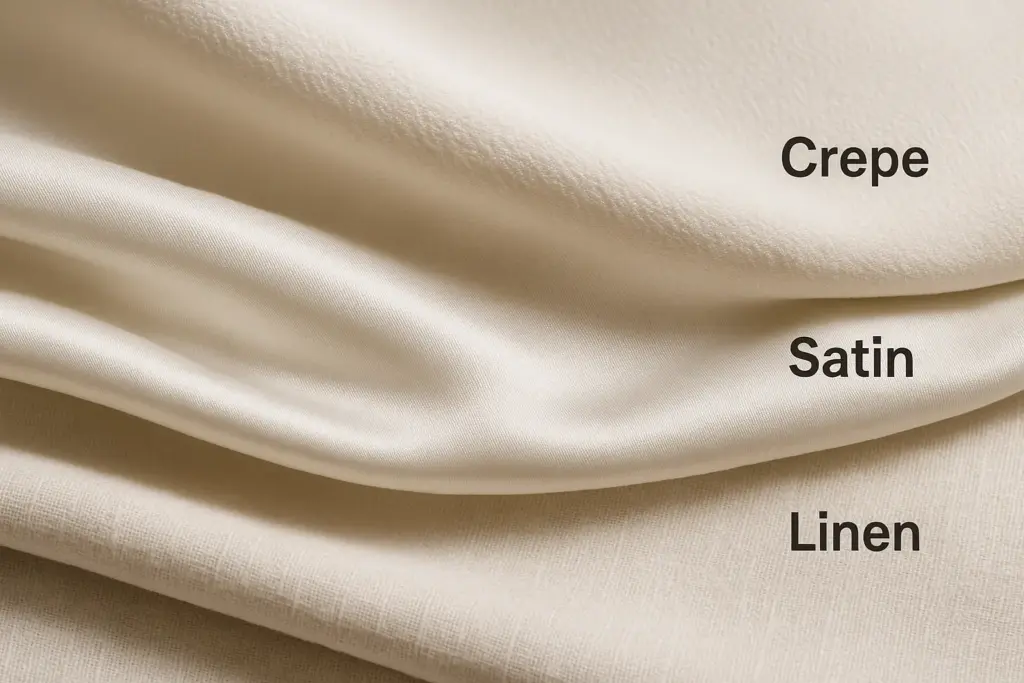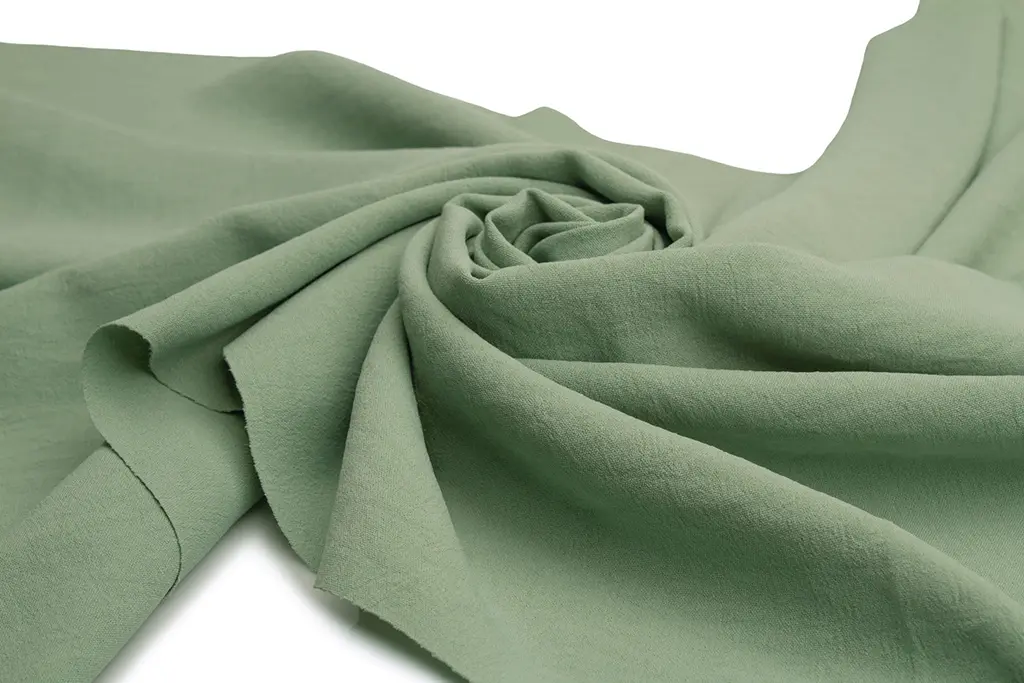Crepe fabric is a lightweight to medium-weight textile known for its uniquely crinkled or pebbled surface. Elegant in appearance and soft in drape, crepe is widely used in both fashion design and interior textiles. Its distinct texture results from specialized weaving or chemical treatments, offering a refined look with excellent wearability.
Defining Crepe: A Fabric of Distinctive Texture
Crepe is not defined by fiber content but by its grainy surface, which may be slightly rough, pebbled, or crinkled. This appearance is achieved through:
- High-twist yarns (S- and Z-twist alternation)
- Chemical treatments
- Specialized weaves (e.g., crepe weave or textured weft insertion)
Crepe can be made from natural fibers (like silk, cotton, or wool) or synthetics (like polyester or rayon), making it adaptable to different price points and uses.
Characteristics of Crepe Fabric
| Attribute | Description |
|---|---|
| Texture | Crinkled, wrinkled, or grainy surface |
| Drape | Fluid and soft, ideal for flowing silhouettes |
| Stretch | Moderate (depending on fiber and weave) |
| Wrinkle Resistance | Naturally wrinkle-masking due to uneven texture |
| Weight | Varies from lightweight (georgette) to medium-weight (wool crepe) |
| Breathability | High in silk or cotton crepe; lower in synthetics |
Common Types of Crepe Fabric
| Type | Fiber Base | Description & Use Case |
|---|---|---|
| Crepe de Chine | Silk or polyester | Lightweight, matte finish; ideal for dresses, blouses |
| Georgette | Silk or poly | Sheer, grainy; used in flowing skirts and evening wear |
| Wool Crepe | Wool blend | Firm texture; suits, jackets, and formalwear |
| Poly Crepe | Polyester | Cost-effective alternative with fluid drape |
| Stretch Crepe | Polyester + spandex | Excellent for fitted garments and eveningwear |
| Cotton Crepe | Cotton | Used in summerwear and lightweight scarves |
Applications in Apparel and Home Textiles
Crepe is a highly versatile fabric with broad applications:
Fashion Industry:
- Evening gowns and cocktail dresses
- Formalwear and office apparel
- Scarves, skirts, and trousers
- Hijabs and abayas in Middle Eastern markets
Home Textiles:
- Drapes and sheer curtains (especially in crepe voile)
- Decorative pillow covers and throws
- Luxury bedding accessories (rare but used in boutique styles)

Crepe vs Other Textures: How It Compares
| Feature | Crepe | Satin | Chiffon | Linen |
|---|---|---|---|---|
| Surface Texture | Crinkled | Smooth & glossy | Sheer & plain | Coarse & matte |
| Drape | Soft & flowing | Fluid | Airy | Crisp |
| Wrinkle Resistance | High | Low | Medium | Low |
| Common Uses | Dresses, scarves | Gowns, bedding | Eveningwear | Shirts, tablecloths |

Why Choose Crepe?
- ✅ Elegant aesthetic with minimal effort
- ✅ Does not require frequent ironing
- ✅ Adapts well to both formal and casual styles
- ✅ Available in a range of fibers and weights
- ✅ Ideal for designers seeking textured visual depth
Conclusion
Crepe fabric’s refined texture, graceful drape, and adaptability across fashion and interiors make it a favored textile for brands seeking a touch of sophistication. Whether you are sourcing for formalwear collections or upscale home textiles, crepe offers timeless appeal with modern versatility.


Leave a Reply